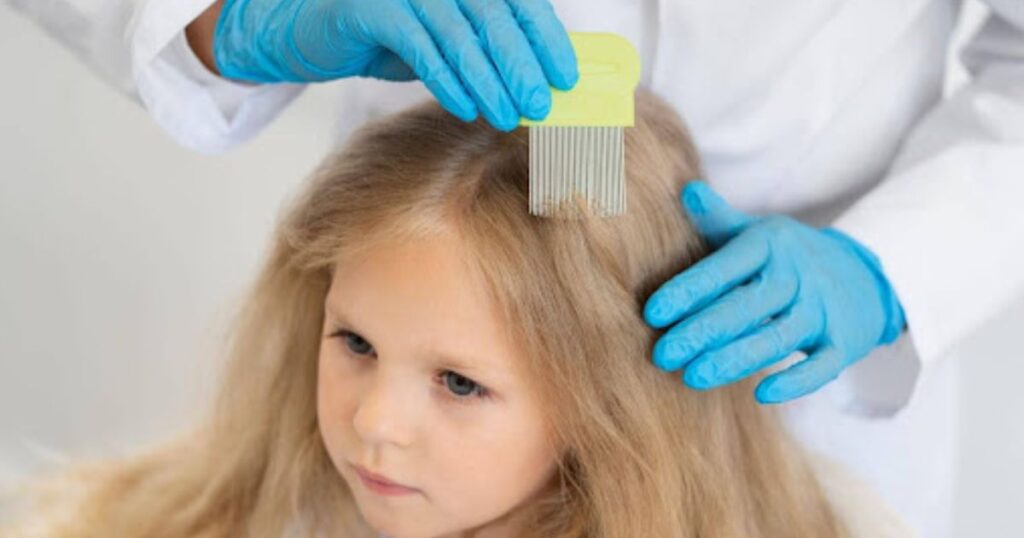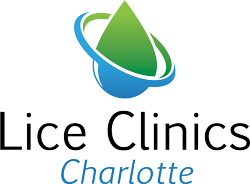Different Stages of Lice Growth and Their Feeding Habits

Dealing with head lice is more than just a hassle – it’s a topic that demands a good grasp for effective management and prevention. Lice infestations are not confined to the scalp; they can also affect various body parts, such as the pubic area and body hair. That is why it is important that parents be familiar with the different stages of lice growth and their feeding habits.
Each type of louse, whether head lice, pubic lice, or body lice, is a distinct species with preferences for the areas they infest. Their life begins when they hatch from eggs to nymphs and ends when they eventually mature into adult lice. From nits to near the end of their life cycle, lice are some of the most destructive and annoying creatures. Understanding the different stages of lice growth and their feeding habits is crucial for preventing the long-term effects of lice infestations and managing any you may have.
Let’s start by having our lice experts explore the ins and outs of head lice growth, their life cycle stages, and feeding habits. Below you will find our expert guide to the different stages of lice growth and their feeding habits to help you gain a better understanding of head lice behavior.
Different Stages of Head Lice Growth Cycle
The Centers for Disease Control and Prevention (CDC) reports that between six and 12 million kids (ages 3-11) get lice each year, lasting an average of 35 days if the entire lice life cycle is complete. Understanding the stages of lice growth is crucial for implementing effective control measures. The life cycle of lice consists of three primary stages: eggs (nits), nymphs, and adults.
Stage One: Head Lice Eggs
The beginning of the lice growth cycle, where adult lice lay eggs, commonly known as nits, is also the most important part. The tiny, oval-shaped structures are firmly attached to the hair shafts near the scalp, providing a secure environment for incubation. When adult lice can lay head lice eggs, it creates the perfect environment for the continuation of the infestation, as they hatch into nymphs after approximately 7-10 days.
Stage Two: Nymphs
Once the eggs hatch, they emerge as nymphs. These juvenile lice will go through three molting stages before reaching adulthood, so you may notice several different types of creatures classified as nymphs. While they closely resemble adult lice, nymphs are smaller in size. During this stage, they feed on blood by piercing the scalp with their mouths.
Stage Three: Adult Lice
The final stage of the lice growth cycle is adulthood. In this stage, adult lice have grown to about the size of a sesame seed and have six legs with claws made for grasping onto hair shafts. They continue to feed on blood by biting into the scalp but also begin to lay eggs, perpetuating the lice life cycle if not addressed immediately.
Feeding Habits During the Head Lice Growth Cycle
You’ve probably heard that lice are like insect vampires. While it sounds like a myth, it’s true. Lice need to eat so much food every so often to survive, so they follow a rigid feeding process. Here are some frequently asked questions about feeding habits during the head lice growth cycle.
How do head lice feed on blood?
Head lice are blood-feeding parasites, meaning they rely on blood as their primary source of sustenance. To obtain the blood they need to survive, lice use their mouths, which are uniquely designed to pierce the scalp and feed on the blood vessels. This feeding behavior is uncomfortable for the infected person and lice infestations can lead to itching, irritation, and, in severe cases, infections.
How often do head lice need to eat?
Adult lice typically feed multiple times per day but must feed at least six times to continue the life cycle and reproduce. When you’re infected with lice, it’s easy to notice because you develop sores where the lice are feeding. Nymphs also require regular feasts of blood to support their growth and development. Disrupting this feeding pattern makes stopping a lice infestation in its tracks possible.
Effective Strategies for Managing Stages of Lice Growth:
Given how complicated lice growth and feeding habits can be, finding effective treatment methods that quickly eliminate your lice infestation is vital. Along with our proven treatments, here are some common suggestions for stopping the head lice growth cycle.
Early detection and treatment
To catch a lice infestation early, include regular head checks, especially in environments where lice infestations are common. Swift action upon discovering lice or nits is essential for preventing the infestation from progressing, so this method is something to include in your after-school routine or health check.
Use Nit combs
Nit combs are commonly used tools for removing head lice eggs from the hair shafts. They are used to comb through the hair with a fine-toothed nit comb, which can help eliminate both nits and nymphs. We use this tried and true method along with our other proven treatments to ensure a more comprehensive approach to lice control.
Maintaining a lice-free environment
Ensuring that lice do not make it into your home, or on your head, is the most critical prevention and treatment method for head lice growth. Since lice eggs are laid on hair shafts close to the scalp, you should always take environmental measures to prevent re-infestation.
Washing and drying personal items such as bedding, clothing, and hair accessories in hot water and high heat can help eliminate lice and their eggs, along with vacuuming and thoroughly cleaning living spaces and your car since lice can live there temporarily.
Treat Head Lice During the Different Stages of Lice Growth With the Carolina Lice Clinics
By recognizing the significance of head lice eggs, and understanding the different stages of lice growth and their feeding habits while implementing effective prevention strategies, you can take proactive steps to address lice challenges. No matter what part of the head lice growth cycle your infestation is currently in.
At the Carolina Lice Clinics, our toxins and pesticide-free AirTral treatment offers a safe solution to the rising challenge of super lice resistance. With a 99.9% success rate over thousands of treatments since 2013 and endorsements by pediatricians, schools, and medical professionals, the quality of our lice treatment and prevention methods is clearly unmatched.
To learn more about lice treatment options call our head lice experts today.
